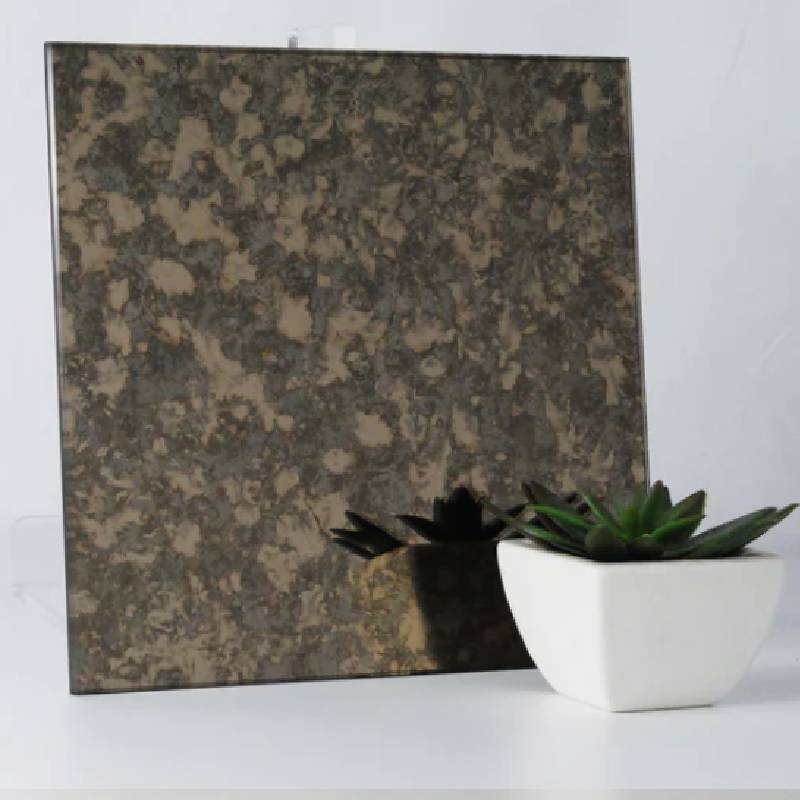The Allure of Figured Glass An Exploration of an Elegant Art Form
Figured glass, often referred to as patterned or embossed glass, has long captivated artisans and enthusiasts alike with its unique blend of functionality and aesthetic appeal. This distinctive medium is characterized by its textured surface, which can enhance both the visual and tactile experience of glass. From classic architectural elements to modern decorative pieces, figured glass has a rich history and continues to inspire creativity in the present day.
Originating in ancient civilizations, the art of decorating glass can be traced back to the Egyptians and Romans, who utilized various techniques to create intricate designs. However, the production of figured glass as we recognize it today began in the late 19th century, coinciding with the Art Nouveau movement, which celebrated organic forms and craftsmanship. During this period, artisans began to explore new ways to manipulate glass, leading to the development of techniques such as rolling and pressing, which allowed for more elaborate textures and patterns.
One of the most notable characteristics of figured glass is its ability to diffuse light. The textured surface not only creates a striking visual effect but also softens the light that passes through, making it an ideal choice for windows, room dividers, and lampshades. This diffusion creates a warm and inviting atmosphere, enhancing the ambiance of any space. Additionally, figured glass offers a level of privacy without sacrificing natural light, making it a popular choice for bathrooms and other intimate areas.
figured glass
The variety of patterns available in figured glass is vast, ranging from simple geometric shapes to elaborate floral motifs. Each design has its own personality, allowing individuals to express their unique style through their choice of glass. For example, a wavy pattern can evoke a sense of movement and fluidity, while a more structured geometric design may lend an air of sophistication and modernity.
In contemporary interior design, figured glass continues to find its place in a wide array of applications. Designers often incorporate it into cabinetry, shower enclosures, and even furniture. The versatility of figured glass allows it to complement various design styles, from minimalist and industrial to vintage and eclectic. Its ability to blend seamlessly into diverse settings while still making a statement is a testament to its enduring appeal.
Moreover, the revival of interest in artisanal craftsmanship has led to a renewed appreciation for figured glass. Many contemporary artisans and glassblowers are experimenting with traditional techniques to create one-of-a-kind pieces that resonate with modern sensibilities. This resurgence not only highlights the beauty of figured glass but also underscores the importance of preserving artisanal skills in a rapidly changing world.
In conclusion, figured glass is not just a functional material; it is an art form that embodies creativity, history, and innovation. Its unique ability to enhance light and space, coupled with its vast array of patterns, makes it a cherished element in both architecture and design. As we continue to explore the possibilities of figured glass, we celebrate not only its aesthetic qualities but also the craftsmanship that brings it to life.
 Afrikaans
Afrikaans  Albanian
Albanian  Amharic
Amharic  Arabic
Arabic  Armenian
Armenian  Azerbaijani
Azerbaijani  Basque
Basque  Belarusian
Belarusian  Bengali
Bengali  Bosnian
Bosnian  Bulgarian
Bulgarian  Catalan
Catalan  Cebuano
Cebuano  Corsican
Corsican  Croatian
Croatian  Czech
Czech  Danish
Danish  Dutch
Dutch  English
English  Esperanto
Esperanto  Estonian
Estonian  Finnish
Finnish  French
French  Frisian
Frisian  Galician
Galician  Georgian
Georgian  German
German  Greek
Greek  Gujarati
Gujarati  Haitian Creole
Haitian Creole  hausa
hausa  hawaiian
hawaiian  Hebrew
Hebrew  Hindi
Hindi  Miao
Miao  Hungarian
Hungarian  Icelandic
Icelandic  igbo
igbo  Indonesian
Indonesian  irish
irish  Italian
Italian  Japanese
Japanese  Javanese
Javanese  Kannada
Kannada  kazakh
kazakh  Khmer
Khmer  Rwandese
Rwandese  Korean
Korean  Kurdish
Kurdish  Kyrgyz
Kyrgyz  Lao
Lao  Latin
Latin  Latvian
Latvian  Lithuanian
Lithuanian  Luxembourgish
Luxembourgish  Macedonian
Macedonian  Malgashi
Malgashi  Malay
Malay  Malayalam
Malayalam  Maltese
Maltese  Maori
Maori  Marathi
Marathi  Mongolian
Mongolian  Myanmar
Myanmar  Nepali
Nepali  Norwegian
Norwegian  Norwegian
Norwegian  Occitan
Occitan  Pashto
Pashto  Persian
Persian  Polish
Polish  Portuguese
Portuguese  Punjabi
Punjabi  Romanian
Romanian  Russian
Russian  Samoan
Samoan  Scottish Gaelic
Scottish Gaelic  Serbian
Serbian  Sesotho
Sesotho  Shona
Shona  Sindhi
Sindhi  Sinhala
Sinhala  Slovak
Slovak  Slovenian
Slovenian  Somali
Somali  Spanish
Spanish  Sundanese
Sundanese  Swahili
Swahili  Swedish
Swedish  Tagalog
Tagalog  Tajik
Tajik  Tamil
Tamil  Tatar
Tatar  Telugu
Telugu  Thai
Thai  Turkish
Turkish  Turkmen
Turkmen  Ukrainian
Ukrainian  Urdu
Urdu  Uighur
Uighur  Uzbek
Uzbek  Vietnamese
Vietnamese  Welsh
Welsh  Bantu
Bantu  Yiddish
Yiddish  Yoruba
Yoruba  Zulu
Zulu 

